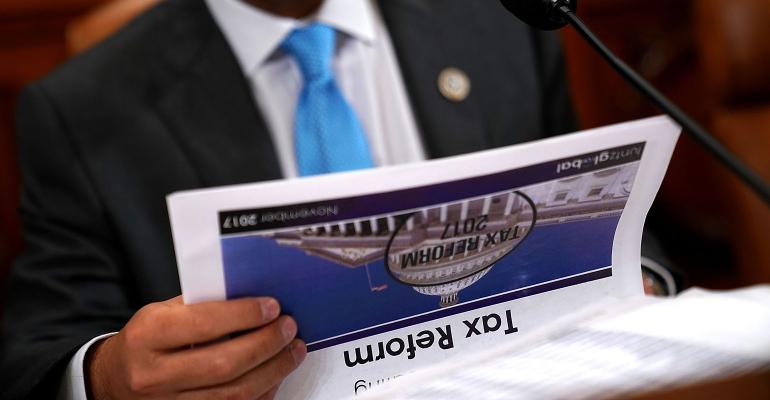The recently concluded 53rd Annual Heckerling Institute on Estate Planning in Orlando, Fla. continued the theme of last year’s Heckerling Institute of the seismic shift in the estate-planning landscape brought about by the dramatic temporary expansion of the federal, estate, gift and generation-skipping transfer (GST) tax exemptions. Here are some of the highlights of what was discussed.
The 2017 Tax Reform Act
On Dec. 20, 2017, Congress passed far-reaching changes to the Internal Revenue Code, known as the Tax Cuts and Jobs Act (the Act). The Act provides significant estate-planning opportunities for high-net-worth individuals to take advantage of a temporary doubling from $5 million to $10 million (subject to indexing) of the estate, gift and GST tax exemptions. This temporary doubling of the federal estate, gift and GST tax exemptions (as indexed) from $5.49 million in 2017 to $11.4 million per person (and to $22.8 million for a married couple) as of Jan. 1, 2019 creates both: (1) a window of opportunity for gifting due to the significant expansion of federal gift and GST tax exemptions, and (2) a need to review existing wills and other estate- planning documents to ensure that they continue to carry out planning objectives.
There’s a significant wrinkle in the Act, however, as it sunsets its doubling of the federal estate, gift and GST tax exemptions on Jan. 1, 2026, reverting to their pre-2018 exemption levels, as indexed for inflation. This will create incentive for wealthy individuals to begin to use their increased exemptions at the risk of losing them come 2026.
No Clawback
There had been some concern that the sunset provisions of the Act could potentially pose a clawback risk if an individual were to gift away his entire gift tax exemption during his lifetime and then die after Dec. 31, 2025, when the unified estate and gift tax exemption was less than the amount that the individual had gifted away during her lifetime. The U.S. Department of Treasury has now issued guidance in the form of proposed regulations, referred to by many as the “Anti-Clawback Regulations,” to clarify that this no longer poses a risk.
Leverage Gifting
The increase of the exemptions gives individuals vast opportunities to leverage their gifting for multiple generations through the following techniques:
- Topping off prior planning by making gifts to existing and/or new family trusts including GST trusts, insurance trusts, spousal lifetime access trusts and grantor retained annuity trusts.
- Making new sales to intentionally defective grantor trusts or, when appropriate, making cash gifts to facilitate the prepayment of existing installment obligations to senior family members.
- Making new intra-family loans (or, when appropriate, cash gifts to facilitate the prepayment of existing loans from senior family members).
State Specific Considerations
State estate-tax-specific considerations may apply in the wake of the temporarily expanded federal exemptions. For example, for those who reside in New York, which imposes a state estate tax as high as 16 percent of the New York taxable estate, the expanded federal exemptions give New Yorkers greater opportunities to plan ahead to reduce their New York taxable estates. New York has a unique feature of its estate tax law that provides a “cliff” built into its estate tax calculation, which quickly phases out the benefits of the New York basic exclusion amount (currently $5.74 million) if the decedent’s New York taxable estate (plus potentially certain taxable gifts made within three years of death, if certain provisions contained in Governor Cuomo’s Executive Budget that was released on Jan. 15, 2019 were to become law) is between 100 percent and 105 percent of the exclusion amount available on the date of death. The cliff completely wipes out the benefits of the exclusion if the decedent’s New York taxable estate (and any such gifts added back – to the extent applicable) exceeds 105 percent of the exclusion amount available on the date of death. In addition, at certain taxable estate levels, it can produce a confiscatory marginal New York estate tax rate that’s substantially in excess of 100 percent. As a result, the New York estate tax exclusion only fully benefits individuals whose New York taxable estates (including taxable gifts made within three years of death if Governor Cuomo’s proposal were enacted into law) fall below the New York exclusion amount in effect on the date of death. In addition, the New York estate tax exemption isn’t portable to spouses for lifetime gifting or for use on the survivor’s New York estate tax return, in sharp contrast to the federal estate tax exemption.
As a result of the dramatic spread between the federal and New York estate tax exemptions ($11.4 million versus $5.74 million for New Yorkers dying in 2019), decedents whose estates are below the federal estate tax exemption amount may still owe significant New York estate tax if their estates exceed the New York estate tax exemption amount. In addition to confirming that will provisions can fully soak up the New York estate tax exemption of the first spouse to die (including via an executor’s decision not to make a qualified terminable interest property election for property in trust), New Yorkers may consider gifting such amount as would bring their taxable estate below the New York estate tax exemption amount. If such individual dies more than three years after making the gift (or after the 3-year addback rule has expired – as of this writing, it’s expired for individuals who die on or after Jan. 1, 2019, but Governor Cuomo’s Executive Budget would retroactively push back such expiration date to Jan. 1, 2026), the New York estate tax can be completely eliminated on the first spouse’s death. Depending on the circumstances, the total combined New York estate tax savings for a married couple can potentially exceed $1 million.





